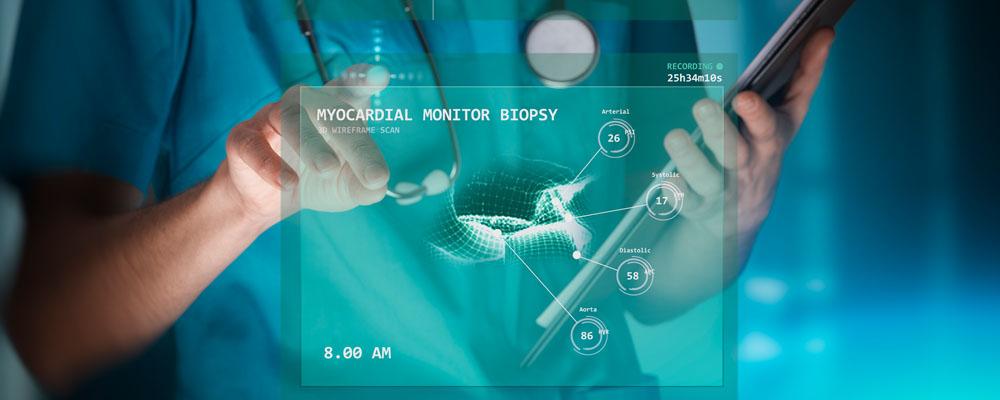
Don’t Touch! COVID-19 Gives Voice and Gesture UIs New Relevance
A glance around any ER, OR or hospital ward and it’s clear that touchscreen technology plays a prominent role in patient care. From AEDs to infusion pumps, most of these highly sensitive and often lifesaving devices are controlled by a user interface (UI) that requires it to be touched by a human hand.
Until now, that’s been a great thing. Touchscreen interfaces have vastly improved how we operate and interact with critical devices. Well-designed interfaces deliver exceptional UX, or user experiences, so it’s much easier for say an oncologist to precisely deliver radiation therapy or for a nurse to quickly check a patient’s vitals. And, touchscreen control has improved the safety of medical devices, leading to better patient outcomes.
But...
Improperly or infrequently cleaned touchscreens can also be the source of infectious diseases. Scientists have found a plethora of bacteria on touchscreens, including Enterococcus faecalis (E. faecalis), which causes a soaring number of hospital-acquired infections. According to the World Health Organization, 99,000 deaths annually in the U.S. are attributed to HCAIs at a cost of $6.5 billion. And potentially deadly COVID-19 can easily be spread by touching a surface like a touchscreen that has infected respiratory droplets on it and then touching your face.
Ick.
Now, I'm certainly not trying to make the case for eliminating touchscreens. The lifeblood of my firm, Integrated Computer Solutions, involves designing UX/UI for touchscreen devices, and developing the custom software that runs these touch devices. Touchscreens are an integral part of our daily lives and in most use cases touch tech is the most practical, reliable, readily available, efficient, cost effective and intuitive option.
What I am saying is this: in today’s age of novel coronavirus, where every surface is a potential contaminant and personal protective equipment is traded on the black market like illegal drugs, medical device makers in particular should explore touchless interfaces like voice and gesture far more aggressively than they have in the past.
The Role of Touchless Interfaces in Healthcare Environments
In non-sterile settings like patient rooms, nursing stations, long-term care facilities and elsewhere, there’s a place for gesture and, even more so voice, interfaces. They can help healthcare workers access medical records and deliver patient care quickly, conveniently and, moreover, safely.
Researchers at Fraunhofer, Europe’s leading application-oriented research organization, a few years ago developed a smart “proxemic monitor” for hospital ICUs that displays data from connected medical devices and can be controlled from a distance, without contact, via either gestures or voice commands. Without the need to touch a device, the risk of transmitting pathogens is nearly eliminated.
Certainly, in environments like operating and emergency rooms, which may be loud and chaotic, voice tech might not be the right choice. Alexa might not be able to clearly hear instructions over the din, which could negatively impact a patient. Or, she might not understand the specialized vocabulary of medicine and execute a command incorrectly, which could be disastrous.
But, there's clearly a role for at least gesture tech in these situations, and for both voice and gesture tech elsewhere in the healthcare ecosystem.
In the operating room, surgeons could, for instance, use gesture interfaces to access information and imaging pertinent to the procedure while maintaining a strict boundary between what is and isn’t sterile. A gloved surgeon could call up a patient’s MRI or chart with simple hand gestures and add notes by “writing” in the air.
So here’s the bottom line:
No, voice and gesture tech aren’t a perfect fit for every environment.
And no, touch technology has not outlived its usefulness. For most applications, it’s still the best choice as it provides exact control of devices and input. That's something voice and gesture have not yet achieved.
But, the global pandemic we’re suffering through reminds us as device makers that we need to consider all use cases and match the best solution to each. In many cases in the medical realm, that may mean increased relevance of devices with touchless interfaces.
References:
WHO report on the burden of endemic healthcare-associated infections worldwide, 2011.
https://info.debgroup.com/blog/touchscreens-vectors-of-infectious-disease